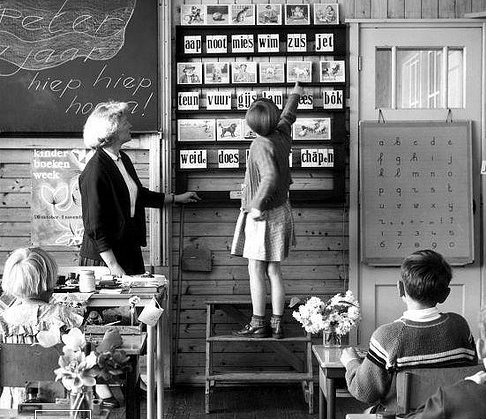The following is a curriculum guide for teaching word recognition. It can be used by both parents and professionals to help children who are struggling to learn to read find success.
As children with language delays, or other disabilities, approach reading, they often find similar difficulties in achieving success. There are a variety of researched methods for teaching children written language one of which is word recognition. One teacher stated “Students with reading-related learning disabilities must have intensive instruction in word recognition to develop into successful readers” (Wanzek & Haager, pp.32, 2003). Word recognition is a process teachers use to help their students become successful with reading.
The Process of Word Recognition
Just like in other areas of academics, students should be taught to their developmental level and not just to their age appropriate level. Word recognition skills are taught on a continuum, where readers work on achieving skills in the process of:
1. Letter-Sound Knowledge
2. Letter-Sound Blending
3. Onset-Rime/Word-Family Instruction
Key Factors in Word Recognition
While teaching word recognition, here are some important factors for teachers to remember:
- 84% of words in the English language have regular, consistent spelling patterns and only 3% are considered highly irregular
- Help students attack words piece by piece, so they are not overwhelmed by the word or phrase in front of them
- It is best to guide and model reading for students than to tell them because the student is often already stressed by the task in front of them, so keeping the environment as friendly as possible helps things run smoother
- Do not let the student struggle too long or they will give up on the task at hand
- Ask the student if the word makes sense in the sentence the way they pronounced it. This helps the student’s awareness and practical thinking
- Use pictures to help relate what the text is trying to say, for example a picture can help the student to realize the noun is ‘bee’ instead of ‘bed’
- Children can read the letter chunks they are familiar with like “at” and the teacher can help blend in other sounds to make new words “cat,” “bat,” “rat”
- Help the child break down larger words into shorter syllable patterns. This can help to simplify text
- Ask the child if they know a word that looks like the new word. This can promote self-help skills when new unfamiliar words come up
The tools listed above for both verbal skills and word recognition can be used as part of an on-going process to promote successful, competent students that become successful, independent adults.
References
Learning Pages. Word Recognition.
Wanzek, Jeanne and Diane Haager. (2003). Teaching Word Recognition with Blending and Analogizing.

How can beginning teachers work or know how to implement the challenges that students are having with word recognition strategies.
I have found daily review helps. Make the children want to know the words by making it a game. You can do bingo or simply the child can temporarily keep the flash cards that they correctly read. Some children may take a really long time to obtain new sight words if they have a severe learning disabilities or low IQ. There is SO many things you can do to incorporate reading into the kids lives though, like labeling basic items in the room, technology, and using what really interests the child. Hope this helps!